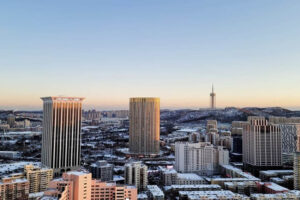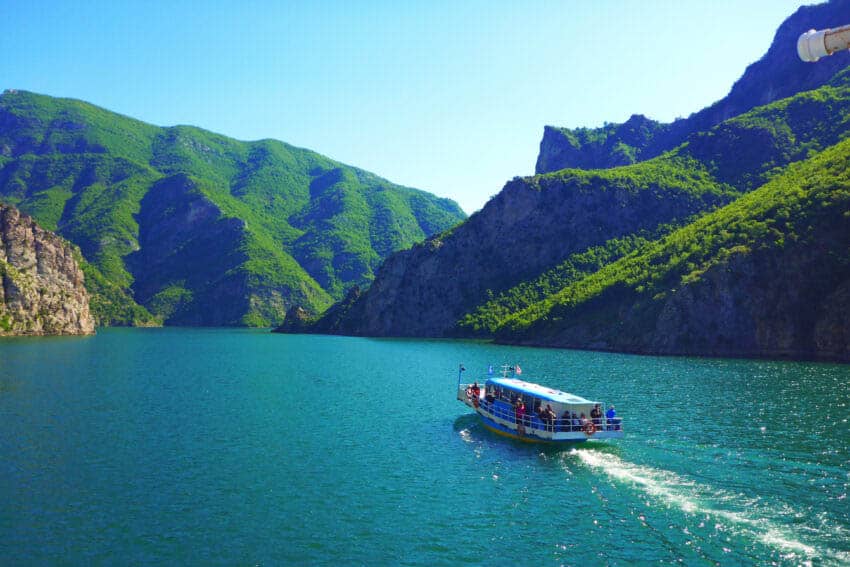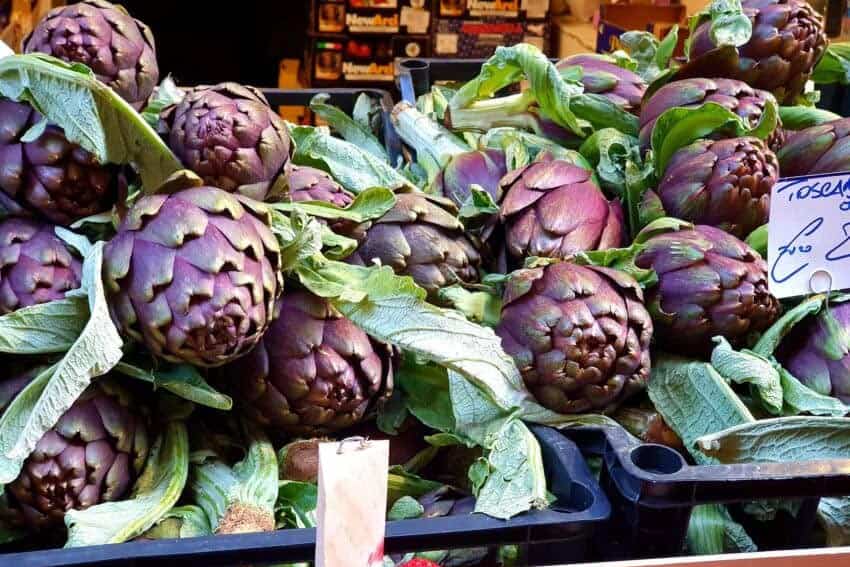
The Road to Mandalay
By Mike Smith
There was no “road to Mandalay” from Rangoon when Kipling immortalized the city in his famous poem; there is now but I still opted to fly to meet Nora my guide from Myanmar Shalom Travel.
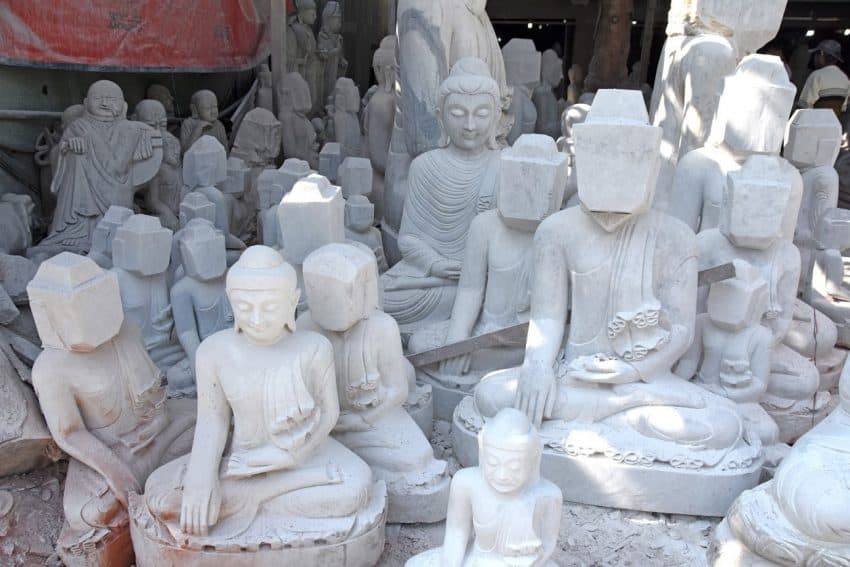
Mandalay is a rather pleasant laid-back city and is the center of culture and trade. It has some marvelous attractions notably U Bein Bridge and Mingun.
My first stop was at Mahamuni Temple which is an important pilgrimage site as it houses the Mahamuni Buddha image, the most highly revered in the country. It is covered in gold leaf foil.
I was lucky to see very young boys offering gold leaves in preparation for their monk initiation ceremony and girls celebrating their ear piercing.
Outside the Mahamuni Temple, there is a whole street where stonemasons can be found toiling away on stone statues of Buddha.
The working conditions are atrocious, with little respect for the health of the workers or the general environment. Interestingly many of the statues are incomplete, awaiting specialist carvers to sculpt the face.

Nearby woodcarvers and weavers go about their work in rather cramped settings too.
U Bein Bridge in Mandalay
U Bein Bridge is the oldest and longest teakwood bridge in the world; 1.2 km in length it crosses Taungthaman Lake. In the late afternoon, it is chaotic but a great experience. Take a brief walk on the bridge but do be careful. It will be crowded. There are no handrails.
People stop without warning for selfies. It can be nerve-wracking but mingle with local tourists, foreigners, and monks on the bridge before shopping at the souvenir stands. Half an hour before sunset rent a boat, relax and enjoy the bridge from the lake as the sun sets behind it.
Birds of prey and herons dive for fish, the luxury tour groups sip champagne I simply took dozens of photos.
Retreating from the bridge I checked into the excellent Magic Hotel and had a leisurely dinner.
Mingun – What Might Have Been.
The next morning Mingun which is located about 11 km upriver from Mandalay on the opposite bank of the Irrawaddy River was our destination. We took a private boat but not until I had explored the simple village set up on the banks of the river.

Woman cart sand, in baskets balanced on their heads, from the river to collection points, wash their clothes, and bathe in the river. Pigs and dogs roam aimlessly. Getting onto our boat was challenging!
It was the 4th boat out so we had to walk along gangplanks from one boat to the next. The journey to Mingun took one hour and on arrival, we rented a tuk-tuk taxi rather than using a bullock cart or walking.
Mingun was established at the end of the 18th century when King Bodawpaya commissioned a new capital. He had big ideas and set about building Mingun Pahtodawgyi Pagoda in 1790.
It would have been the world’s largest pagoda but only a third of the pagoda was built before a prophecy that the completion of the pagoda would result in the destruction of the country put a dampener on construction.
Earthquake Damage in Mingun

Damage from earthquakes ensured it would never be completed. He did complete in 1808, however, the world’s largest intact bell. Close to four meters tall and five meters across, the bronze-cast Mingun Bell weighs a massive 90 tonnes.
Hsinbyume Paya, a spectacular dazzling white monument was commissioned in 1816 by the grandson of King Bodawpaya, King Bagyidaw to commemorate his favorite wife who died in childbirth. The design, with its seven terraces, represents Mount Meru, the sacred mountain in Buddhist mythology.
To Bagan
At 6 am the next morning I took a 6-hour bus journey and then a 3-hour boat to Bagan. In retrospect, I should have gone by car but I was amply compensated when I checked into the Tharabar Hotel that evening.
Pagodas and Temples
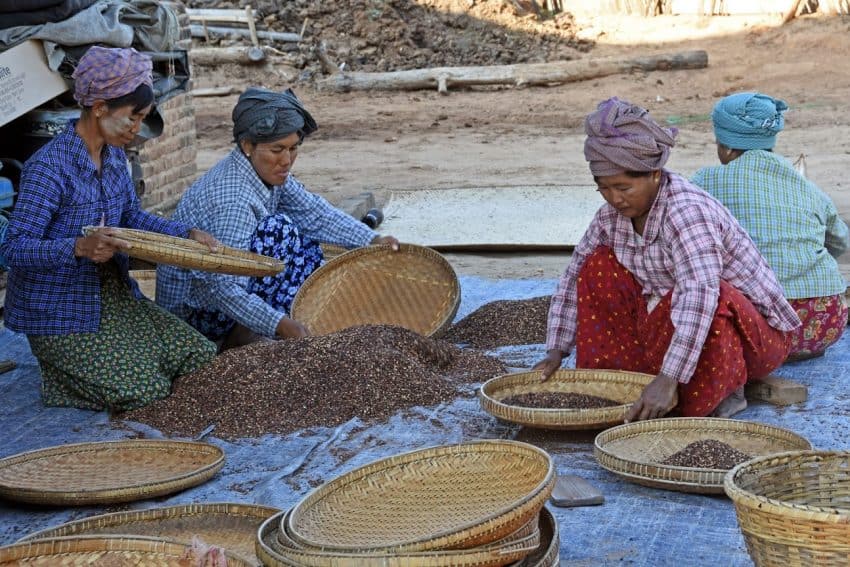
Old pagodas and temples are the main attractions in Bagan with the majority dating from the 11th – 13th Centuries.
The best time to tour, preferably by, the car is early morning or late afternoon as the light is best and the temperature is cooler.
There are close to 4,000 pagodas and temples so it is essential to be selective.
Key pagodas and temples I explored included Shwezigon, Htimilo, and Andanan.
I visited several more for the vistas from their viewing platforms.
Shwezigon is a beautiful 11th-century pagoda with a gilded stupa surrounded by smaller temples, shrines and intricate carvings.

Ananda is a huge, well-preserved 12th-century temple with wonderful architecture.
With four standing Buddha sculptures and incredible detail, it is a must-see. I took a 1-hour horse carriage ride from the car park and loved the dusty trail and views over the river from an elevated pathway.
On the second day, I explored a couple of local villages. Minnanthu is an agricultural village with a population of 1,500 living in simple wooden houses.
I was the only visitor and had no pressure to buy anything or tip. Women smoked cheroots containing a mix of tobacco and wood shavings.
Bamboo Artifacts
Bullocks lazed around, a blacksmith was working on a cartwheel and women prepared sesame and peanut oil or sieved rice while others wove or worked on silver and bamboo artifacts.
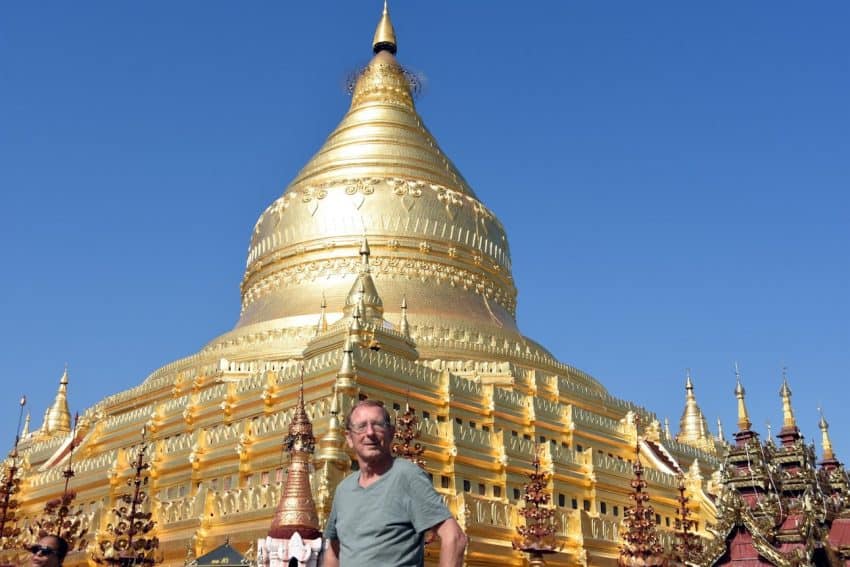
At a second village making lacquerware was the main industry but others prepared plum seeds or did mundane but essential jobs such as transporting water.
Mandalay and Bagan offer a good mix of culture, history, and rural life and are highly recommended.
Find out more about visiting Myanmar on their tourism website.
- Singapore’s Hidden Gems - December 20, 2020
- Kuching Sarawak: The Other Side of Malaysia - November 6, 2019
- Mandalay and Bagan, Culture and History in Myanmar - February 23, 2018


